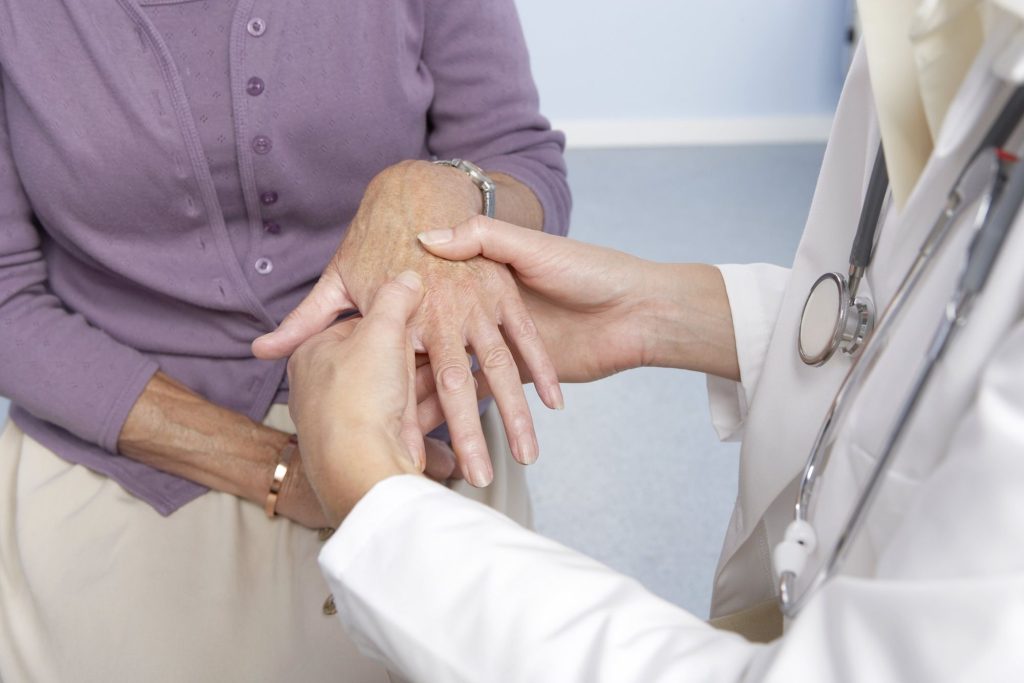03.07.2021 – 13:21
Osteoarthritis is a condition in which consumption of joints causes cartilage loss. Cartilage is strong but flexible tissue that supports the corners of bones in joints.
Osteoarthritis can lead to:
pain
swelling
joint stiffness
loss of flexibility and function
Erosive osteoarthritis is a type of inflammatory osteoarthritis. It can develop in the connecting joints of the fingers and less frequently in the fingers. Clinically, these are known as interphalangeal nodes.
Research suggests that less than 3 percent of people develop erosive osteoarthritis. About 10 percent of people with symptomatic osteoarthritis have this inflammatory condition of the joints.
Erosive osteoarthritis can cause:
a bone strengthening near the cartilage, known as subchondral sclerosis
a narrowing of the space between the bones
destruction of bone material (erosions)
Symptoms of erosive osteoarthritis
Erosive osteoarthritis can be challenging to diagnose with X-rays and other imaging tests. An analysis of dozens of studies found that there is some disagreement among doctors about what joint changes indicate for erosive osteoarthritis.
A generally accepted sign of the condition is its sudden onset. Stiffness and pain associated with conventional osteoarthritis tend to build up gradually. But the symptoms of erosive osteoarthritis usually appear without warning.
These symptoms mainly affect the fingers and usually include:
sudden pain
swelling
warmth
redness
reduced hand function (becomes harder to grasp objects)
Changes in joint function usually occur at the proximal joints of the fingers (between the toes), less frequently at the distal joints (near the fingertips).
Causes of erosive osteoarthritis
Health experts disagree on whether erosive osteoarthritis should be considered an aggressive form of osteoarthritis or a specific type of arthritis.
Typical osteoarthritis can be traced to appearing in the joints over time or in an injury that does not heal properly. Erosive osteoarthritis does not separate these obvious origins. Researchers believe that hormones may be involved because women are affected more often than men. Another possibility is an autoimmune condition.
Risk factors for erosive osteoarthritis
Erosive osteoarthritis most often affects women around the age of 50 years. Researchers believe that estrogen loss may play a role, especially as typical osteoarthritis of the hands and knees is much more common in postmenopausal women.
A family history of erosive osteoarthritis also increases the risk of developing the condition.
The presence of typical osteoarthritis can also increase the risk. The estimated prevalence of erosive arthrosis in the general population is 2.8 percent. However, the rate rises to 10.2 percent among people with symptomatic osteoarthritis of the hands.
Women are diagnosed with arthritis more often than men.
Treatment of erosive osteoarthritis
There is currently no cure for erosive osteoarthritis. It is also a progressive condition that cannot be reversed or completely cured. The goal of treatment is to manage the severity of the symptoms and maintain joint function.
Many treatments for erosive osteoarthritis are the same as standard treatments for osteoarthritis. However, the severity of the symptoms will determine the best approach for you.




